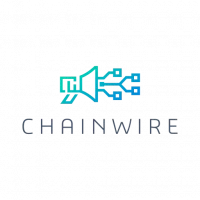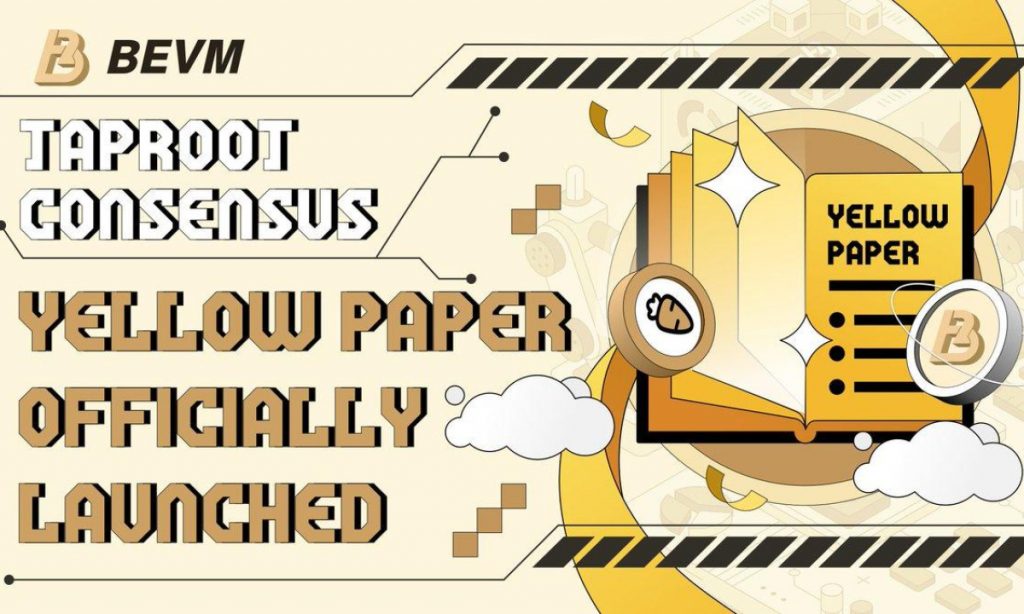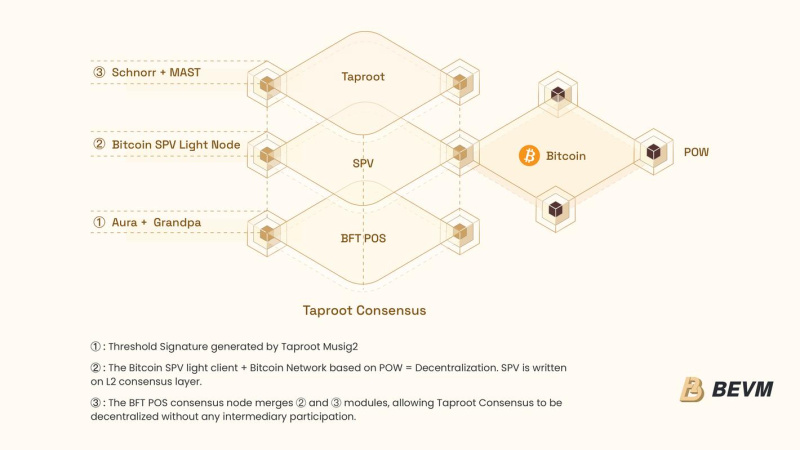BEVM Unveils Groundbreaking Taproot Consensus for Decentralized Bitcoin Layer 2 Solution


Cardiff, 英国, May 26th, 2024, Chainwire
On May 20, 2024, the Bitcoin Layer2 development team BEVM released the technical yellow paper titled “Taproot Consensus: A Decentralized BTC Layer2 Solution.” This paper details the implementation of Taproot Consensus, leveraging native Bitcoin technologies such as Schnorr signatures, MAST, and Bitcoin SPV nodes to build a fully decentralized BTC Layer2 solution. Taproot Consensus represents a significant leap in native Bitcoin scalability, combining existing Bitcoin technologies innovatively without modifying Bitcoin’s core code.
I. History of Bitcoin’s Technical Iterations
- October 31, 2008: Satoshi Nakamoto published “Bitcoin: A Peer-to-Peer Electronic Cash System,” introducing Bitcoin and the concept of SPV (Simple Payment Verification).
- January 3, 2009: Nakamoto mined the Genesis Block, launching Bitcoin. The original code used ECDSA for digital signatures instead of the more suitable Schnorr signatures, which were under patent protection at the time. Schnorr signatures retain all the functionalities and security assumptions of ECDSA and can surpass the 15-signature limit of ECDSA, enabling the management of Bitcoin with thousands of addresses without affecting signing speed.
- 2018: Bitcoin core developers proposed integrating Schnorr signatures into the Bitcoin network.
- November 14, 2021: The Taproot upgrade integrated Schnorr signatures and introduced MAST (Merkelized Abstract Syntax Trees), enabling smart contract-like capabilities and decentralized multi-signature management.
- The Taproot Consensus solution by BEVM builds on these advancements, combining Schnorr signatures and MAST to manage multi-signature addresses and enable complex business scenarios in Bitcoin Layer2.
II. Overview of the Taproot Consensus Solution:
The yellow paper begins by highlighting Bitcoin’s non-Turing complete nature and limited functionality for smart contracts. It argues for using Bitcoin’s existing capabilities to build a decentralized Layer2 solution rather than modifying Bitcoin Layer1.
BEVM’s Taproot Consensus combines Bitcoin’s Taproot technology (Schnorr signatures and MAST), Bitcoin SPV light nodes, and the BFT PoS consensus mechanism to create a decentralized and consistent Layer2 network.
III. Detailed Explanation of Taproot Consensus Architecture

The Taproot Consensus architecture comprises three main components: Schnorr+MAST, Bitcoin SPV, and Aura+Grandpa.
· Schnorr+MAST: Uses these technologies from the Taproot upgrade to achieve decentralized Bitcoin multi-signature management driven by Bitcoin code.
· Bitcoin SPV: Allows synchronization and verification of Bitcoin transactions without running a full node.
· Aura + Grandpa: Advanced PoS consensus protocols for Byzantine fault tolerance, ensuring high consistency among network nodes.
In the BEVM system, each validator holds a BTC private key for Schnorr signatures. The aggregated public key forms a MAST tree, enabling BTC transfers and inscriptions to the threshold signature address. Validators act as Bitcoin SPV light nodes, synchronizing the BTC network state securely and permissionlessly. Aura+Grandpa ensures the Layer2 network’s security and trustworthiness, with assets managed by BFT consensus.
The operating principle of Taproot Consensus is: “In the BEVM system, each validator holds a BTC private key for Schnorr signatures. The characteristic of Schnorr signatures enables efficient signature aggregation, thereby enhancing the system’s security and efficiency. The aggregated public key Pagg, generated through the Musig2 multi-signature scheme, forms a large MAST (Merkle Abstract Syntax Tree). After generating the root hash of the MAST tree, validators perform BTC transfers and inscriptions to the threshold signature address generated by the MAST tree, enabling the submission of data from the BTC mainnet to the BEVM network. Each validator also acts as a Bitcoin SPV (Simplified Payment Verification) light node, allowing them to securely and permissionlessly synchronize the BTC network state.”
IV. Other Technical Details in the Yellow Paper – True Decentralization
The yellow paper also details the implementation of Schnorr signatures, MAST, Bitcoin SPV light nodes, and Aura+Grandpa, providing a comprehensive technical outline for those interested in Bitcoin technologies. It explains the Musig2 implementation and contrasts with other BTC Layer2 projects like Mezo, which uses the tBTC protocol. Unlike tBTC, which relies on a network of nine signatories, Taproot Consensus integrates multi-signature networks with BFT PoS consensus, achieving true decentralization.
Moreover, the yellow paper explains the implementation process of Musig2 and the differences between other BTC Layer2 projects like Mezo and Taproot Consensus. Mezo’s underlying technical structure is based on the tBTC protocol, which uses Bitcoin multi-signature to construct a threshold signature network, offering strong consistency compared to traditional distributed networks. However, tBTC still relies on a network of nine signatories, whereas a truly decentralized system should be consensus-driven, combining multi-signature networks with BFT PoS (Byzantine Fault Tolerance Proof of Stake) consensus mechanisms. This is the difference between distributed networks and blockchains; distributed networks emphasize distribution but lack Byzantine fault-tolerant consensus, whereas blockchains, while also being distributed networks, are driven by Byzantine fault-tolerant consensus, achieving true decentralization. The Taproot Consensus solution adopts this more advanced design. By integrating Schnorr signatures, MAST, Bitcoin SPV light nodes, and Aura and Grandpa Byzantine fault-tolerant consensus mechanisms, it constructs a highly consistent and secure decentralized Layer2 scalability solution. This integration enhances the scalability and usability of the Bitcoin network and ensures the security and consistency of the BEVM network.
Conclusion
The BEVM team’s technical yellow paper comprehensively describes Taproot Consensus, a Bitcoin Layer2 solution built entirely on native Bitcoin technologies. It respects and innovates on Bitcoin’s original technological direction, making it a true evolution of native Bitcoin scalability technology. As the Bitcoin ecosystem evolves, solutions like Taproot Consensus will be crucial for its development, serving as major cornerstones for truly decentralized Bitcoin Layer2 solutions.
About BEVM
BEVM is the first fully decentralized, EVM-compatible Bitcoin Layer 2 solution. It allows Ethereum ecosystem DApps to operate on Bitcoin, using BTC as gas. BEVM enhances Bitcoin’s utility by providing a secure and scalable platform for decentralized applications. The system integrates advanced consensus mechanisms, cross-chain interaction, and robust data integrity to ensure a seamless experience. BEVM aims to innovate within the Bitcoin ecosystem by offering increased scalability, security, and compatibility with popular Ethereum tools and applications.
For more information, users can visit BEVm’s official website or follow BEVM on Twitter.
Contact
Tommie
BEVM
[email protected]
Disclaimer
In line with the Trust Project guidelines, please note that the information provided on this page is not intended to be and should not be interpreted as legal, tax, investment, financial, or any other form of advice. It is important to only invest what you can afford to lose and to seek independent financial advice if you have any doubts. For further information, we suggest referring to the terms and conditions as well as the help and support pages provided by the issuer or advertiser. MetaversePost is committed to accurate, unbiased reporting, but market conditions are subject to change without notice.
About The Author
Chainwire is the top blockchain and cryptocurrency newswire, distributing press releases, and maximizing crypto news coverage.
More articles

Chainwire is the top blockchain and cryptocurrency newswire, distributing press releases, and maximizing crypto news coverage.

















































